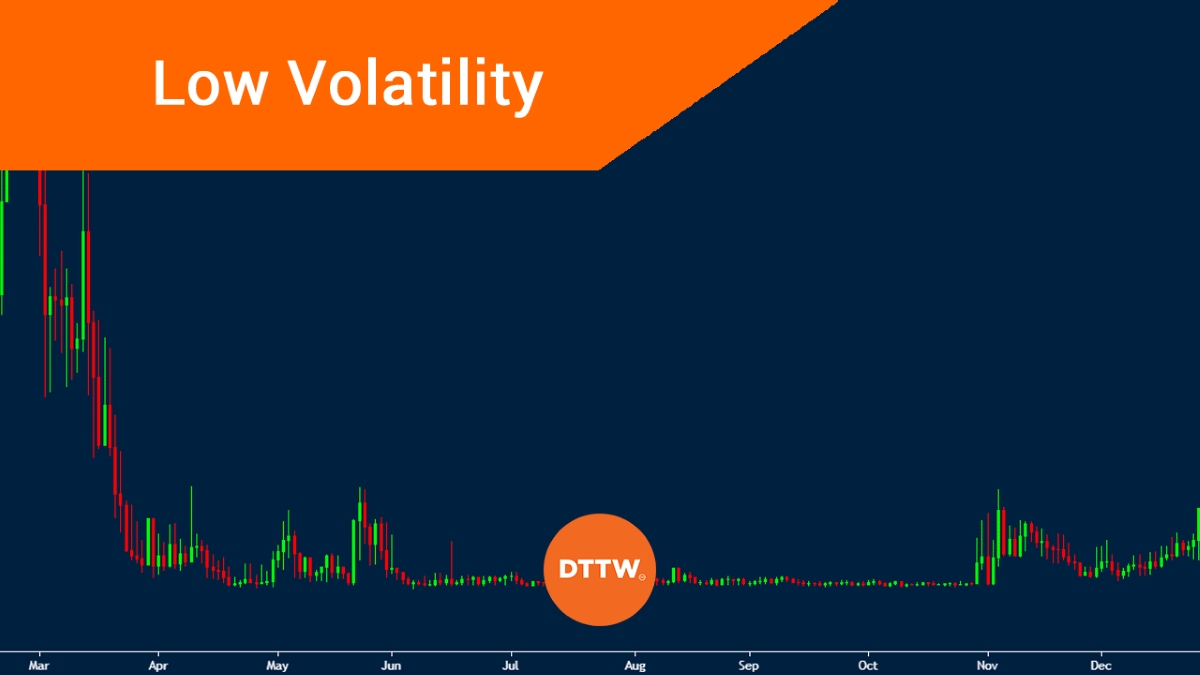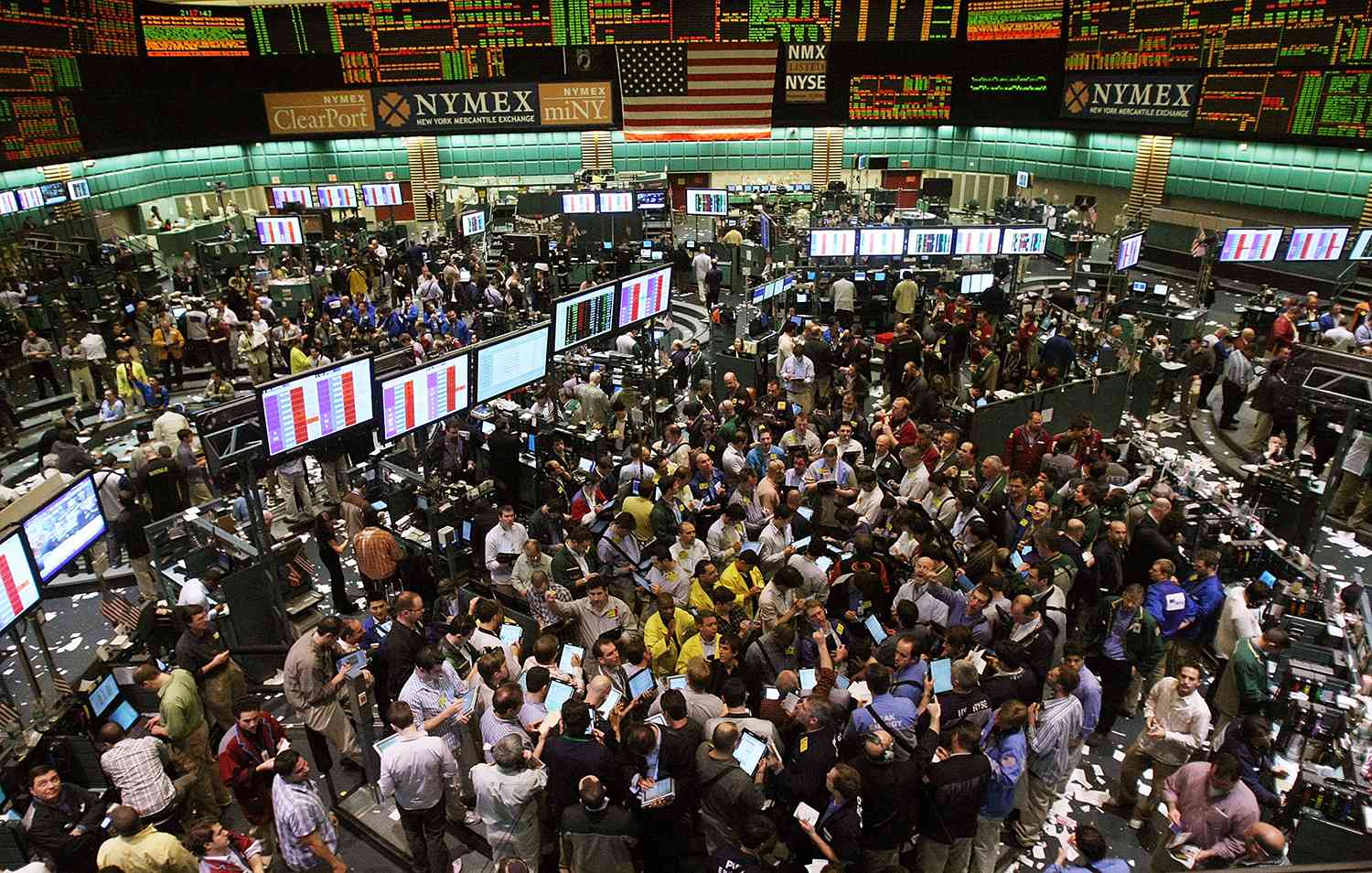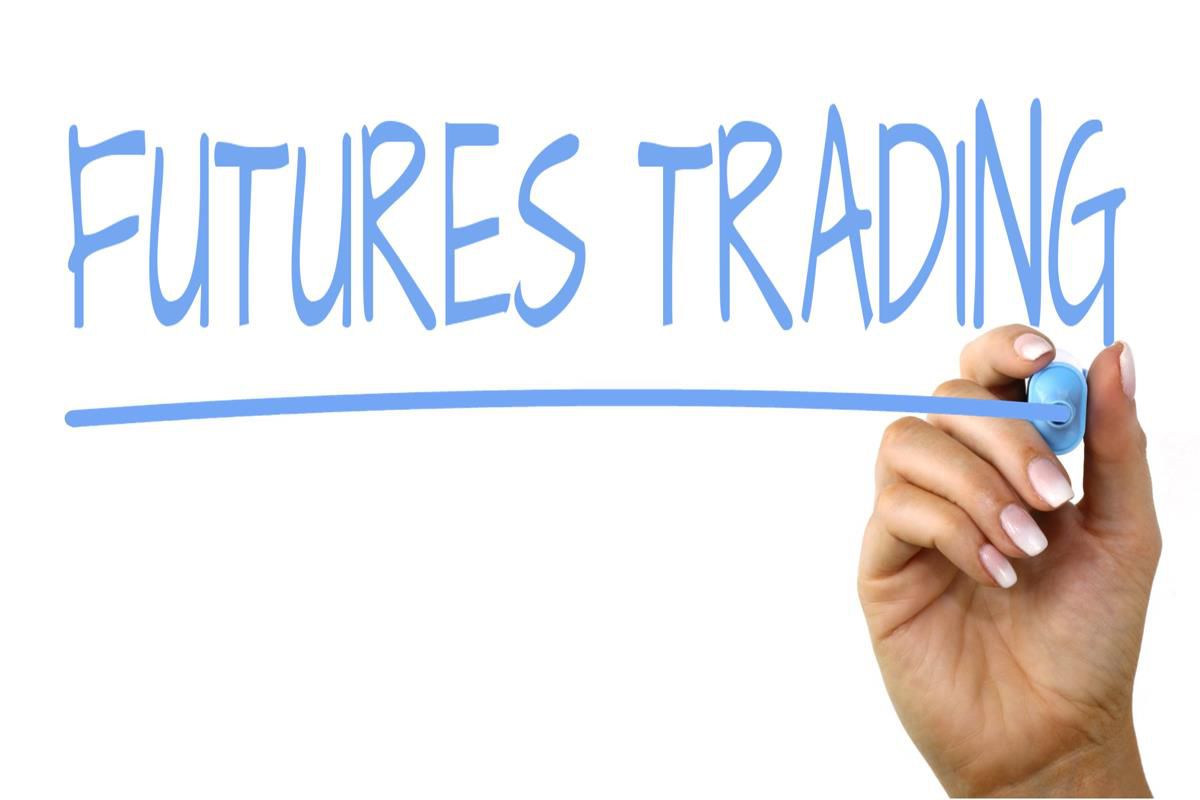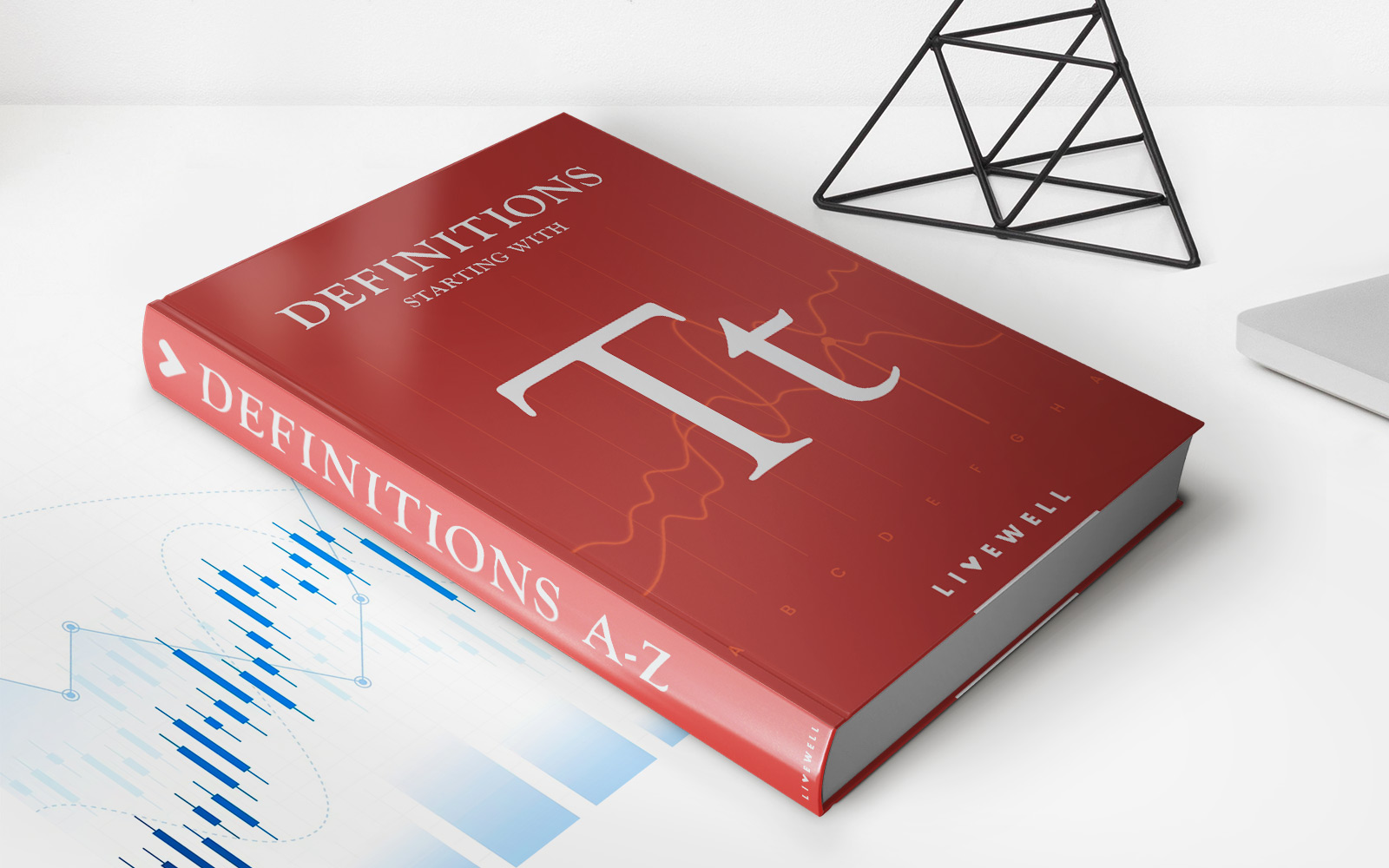Home>Finance>For Which Futures Contracts And Maturities Does The Bid-Ask Spread Tend To Be Greatest?
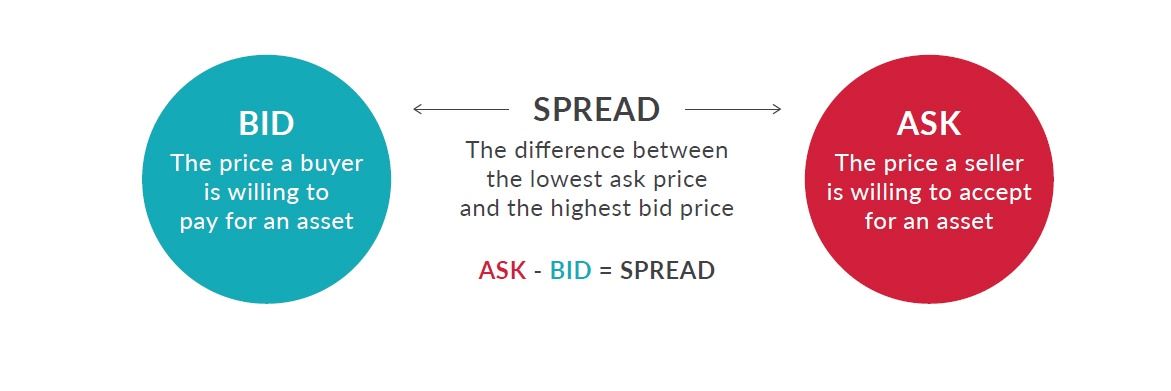

Finance
For Which Futures Contracts And Maturities Does The Bid-Ask Spread Tend To Be Greatest?
Published: December 24, 2023
Discover which futures contracts and maturities in finance are associated with the highest bid-ask spreads. Learn more about bid-ask spreads in the futures market.
(Many of the links in this article redirect to a specific reviewed product. Your purchase of these products through affiliate links helps to generate commission for LiveWell, at no extra cost. Learn more)
Table of Contents
Introduction
When it comes to trading futures contracts, one important factor that traders need to consider is the bid-ask spread. The bid-ask spread is the difference between the bid price (the price at which buyers are willing to buy) and the ask price (the price at which sellers are willing to sell). This spread represents the trading costs and liquidity of the futures contract, and it can have a significant impact on a trader’s profitability.
Understanding the dynamics of bid-ask spread is crucial for traders, as it allows them to make informed decisions about when and how to trade. In this article, we will dive into the world of futures contracts and explore which contracts and maturities tend to have the greatest bid-ask spread.
Before we delve into the analysis, it is important to understand the factors that influence bid-ask spread. Market liquidity, volatility, trading volume, and transaction costs all play a role in determining the bid-ask spread. Contracts that have low liquidity, high volatility, low trading volume, or high transaction costs are likely to have a wider bid-ask spread.
As we explore different futures contracts, it is crucial to note that the bid-ask spread can vary across asset classes. Equity futures, commodity futures, currency futures, and interest rate futures each have their own unique characteristics and factors that influence bid-ask spread.
Additionally, the maturity of a futures contract can also impact the bid-ask spread. Longer-dated contracts tend to have a wider bid-ask spread due to the uncertainty and potential risks associated with a longer timeframe. On the other hand, shorter-dated contracts tend to have a narrower bid-ask spread as they have a shorter time horizon and are more actively traded.
Throughout this article, we will analyze the bid-ask spread of different futures contracts and explore the impact of contract maturities. By understanding the factors that contribute to a wider or narrower bid-ask spread, traders can make more informed decisions and optimize their trading strategies.
Understanding Bid-Ask Spread
The bid-ask spread is a crucial concept to understand in the world of trading. It represents the difference between the highest price that a buyer is willing to pay (the bid price) and the lowest price that a seller is willing to accept (the ask price). The bid-ask spread is essentially the cost of initiating a trade in a futures contract.
Traders looking to buy a futures contract will place a bid at a particular price, indicating the maximum amount they are willing to pay. On the other hand, sellers looking to sell a futures contract will place an ask at a particular price, indicating the minimum amount they are willing to accept. The bid-ask spread arises because buyers are looking for the best price possible, while sellers are looking to maximize their profits.
For example, let’s say the bid price for a particular futures contract is $100 and the ask price is $101. This means that buyers are willing to pay up to $100 for the contract, while sellers are willing to sell it for a minimum of $101. The bid-ask spread in this case is $1, representing the cost of executing a trade.
It is important to note that the bid-ask spread can vary across different futures contracts and even within the same contract over time. Factors such as market liquidity, trading volume, and volatility can impact the bid-ask spread. Contracts with high liquidity and trading volume tend to have narrower bid-ask spreads, as there are more buyers and sellers actively participating in the market. Conversely, contracts with low liquidity and trading volume may have wider bid-ask spreads, as there are fewer participants available to execute trades.
Bid-ask spread is also influenced by transaction costs associated with trading futures contracts. These costs include brokerage fees, exchanges fees, and regulatory fees. Higher transaction costs can lead to wider bid-ask spreads, as traders need to factor in these costs when placing bids or asks.
Additionally, bid-ask spread can be affected by market volatility. In times of high volatility, there may be more uncertainty and risk associated with the contract, leading to wider bid-ask spreads. Traders may demand a higher premium to compensate for the potential price fluctuations and risks involved.
Understanding the bid-ask spread is essential for traders, as it directly impacts their trading costs and potential profitability. By carefully analyzing the bid-ask spread of different futures contracts, traders can make more informed decisions and identify the most optimal trading opportunities.
Factors that Influence Bid-Ask Spread
The bid-ask spread in futures contracts can fluctuate based on several factors. Understanding these factors is crucial for traders to effectively navigate the market and make informed trading decisions. Let’s explore some of the key factors that influence the bid-ask spread.
- Market Liquidity: Liquidity refers to the ease with which a futures contract can be bought or sold without causing a significant impact on its price. Contracts with higher liquidity tend to have narrower bid-ask spreads because there is a larger pool of buyers and sellers, making it easier to execute trades at more competitive prices.
- Trading Volume: Trading volume is a measure of the number of contracts being traded within a specific period. Contracts with higher trading volume generally have narrower bid-ask spreads as there are more participants actively buying and selling, contributing to a more efficient market.
- Volatility: Volatility refers to the degree of price fluctuations in a futures contract. Higher levels of volatility can lead to wider bid-ask spreads as traders may require a higher premium to compensate for the increased risk and uncertainty associated with the contract.
- Transaction Costs: Transaction costs, such as brokerage fees, exchange fees, and regulatory fees, can impact the bid-ask spread. Higher transaction costs generally lead to wider bid-ask spreads, as traders need to factor in these costs when placing their bids or asks.
- Market Maker Activity: Market makers play a vital role in providing liquidity to the market by constantly quoting bid and ask prices. Their participation can narrow the bid-ask spread, especially in contracts with lower trading activity or liquidity.
- Time of Day: Bid-ask spreads can fluctuate throughout the trading day. During periods of high trading activity, such as market open or when major economic data is released, bid-ask spreads tend to be narrower. Conversely, bid-ask spreads can widen during periods of low trading volume or during off-market hours.
It’s important to note that these factors are interrelated and can collectively influence the bid-ask spread of a futures contract. Traders should monitor these factors and consider them in conjunction with their trading strategies to optimize their trades and minimize costs.
Analysis of Different Futures Contracts
When it comes to analyzing the bid-ask spread, it’s important to consider the different types of futures contracts and their unique characteristics. Let’s take a closer look at the bid-ask spread of equity futures, commodity futures, currency futures, and interest rate futures.
Equity Futures
Equity futures are contracts that allow traders to speculate on the price movement of a particular stock index, such as the S&P 500 or the NASDAQ 100. These contracts tend to have narrower bid-ask spreads due to their high liquidity and trading volume. They are actively traded by both institutional and individual investors, leading to a more efficient market with tighter spreads.
Commodity Futures
Commodity futures involve the trading of physical commodities, such as gold, oil, natural gas, or agricultural products. The bid-ask spread for commodity futures can vary significantly depending on the specific commodity and its market conditions. Contracts for highly traded commodities like gold or oil usually have narrower bid-ask spreads due to higher liquidity. Less actively traded commodities may have wider spreads due to lower liquidity and market participation.
Currency Futures
Currency futures allow traders to speculate on the exchange rate between two currencies. The bid-ask spread for currency futures can be influenced by factors such as market liquidity, volatility in the foreign exchange market, and interest rate differentials. Major currency pairs like EUR/USD or GBP/USD generally have narrower spreads due to high trading volume, while exotic currency pairs may have wider spreads due to lower liquidity.
Interest Rate Futures
Interest rate futures are contracts that allow traders to speculate on future interest rate movements. These contracts are influenced by factors such as market expectations, economic indicators, and central bank policies. The bid-ask spread for interest rate futures can vary depending on the liquidity of the specific contract and the prevailing interest rate environment.
It’s important to note that while these general trends exist, the bid-ask spread can vary depending on market conditions, trading volume, and other factors. Traders should always closely monitor the bid-ask spreads of specific futures contracts they are interested in trading to make informed decisions based on current market conditions.
Equity Futures
Equity futures are derivative contracts that allow traders to speculate on the price movement of a specific stock index, such as the S&P 500 or the NASDAQ 100. These contracts provide investors with exposure to a diversified portfolio of stocks without owning the underlying assets. Equity futures are highly popular and actively traded by institutional and individual investors alike.
When analyzing the bid-ask spread of equity futures, several factors come into play. The bid-ask spread is typically narrower compared to other futures contracts due to the high liquidity and trading volume in the equity market. This liquidity is driven by the vast number of market participants, including large institutional investors, hedge funds, and individual traders.
The narrow bid-ask spread in equity futures can be attributed to the active competition among traders and market makers. Market makers play a significant role in maintaining liquidity by constantly quoting bid and ask prices, ensuring that traders can easily buy or sell contracts at competitive prices. Their presence helps to keep the bid-ask spread tight and minimize trading costs.
Furthermore, the high trading volume observed in equity futures markets contributes to the narrow bid-ask spreads. Increased trading volume means that there are more participants actively buying and selling contracts, leading to a more efficient market. This liquidity reduces the impact of individual trades on the overall market and aids in narrowing the bid-ask spread.
Additionally, equity futures markets are highly transparent and regulated, which helps to enhance liquidity and reduce the bid-ask spread. The presence of various regulatory bodies and exchanges ensures fair trading practices and provides traders with the confidence to enter and exit positions at competitive prices.
It’s important to note that while equity futures typically have narrower bid-ask spreads, there can still be variations depending on specific index futures. Highly traded and popular indices, such as the S&P 500 or the NASDAQ 100, generally exhibit narrower spreads due to their broad market representation and high liquidity. However, less actively traded or smaller market indices may have wider spreads due to lower liquidity and lower trading volume.
Overall, traders looking to engage in equity futures trading benefit from the narrower bid-ask spreads, reflecting the high liquidity and competitive nature of the equity markets. This provides traders with the opportunity to execute trades at more favorable prices and effectively manage their trading costs.
Commodity Futures
Commodity futures contracts are derivatives that allow traders to speculate on the price movement of physical commodities such as gold, oil, natural gas, agricultural products, and more. These contracts provide an avenue for investors to gain exposure to the commodity markets without physically owning the underlying assets.
When analyzing the bid-ask spread of commodity futures, it is important to consider the specific commodity being traded. The bid-ask spread can vary widely depending on factors such as market liquidity, trading volume, and the supply and demand dynamics of the commodity.
Generally, highly traded and liquid commodities like gold, oil, and natural gas tend to have narrower bid-ask spreads. These commodities attract a significant amount of participant interest and have well-established futures markets, with numerous buyers and sellers actively trading the contracts. The high liquidity in these markets allows for efficient price discovery and tighter spreads.
On the other hand, less actively traded or niche commodities may exhibit wider bid-ask spreads. These commodities may have lower liquidity and trading volume, resulting in fewer market participants and a higher likelihood of larger spreads. Additionally, unique factors specific to each commodity, such as storage costs, transportation constraints, or seasonality, can influence the bid-ask spread.
Market volatility also plays a role in the bid-ask spread of commodity futures. Commodities that experience higher levels of price volatility, such as agricultural products affected by weather conditions or energy commodities influenced by geopolitical factors, may have wider spreads. Traders demand a higher premium to compensate for the increased risk associated with these volatile commodities.
It’s important to note that commodity markets can be impacted by external factors such as global economic conditions, geopolitical events, and changes in supply and demand dynamics. These factors can introduce additional volatility and influence the bid-ask spread of commodity futures.
When trading commodity futures, traders should closely monitor the bid-ask spreads of specific contracts they are interested in. Evaluating factors like liquidity, trading volume, and market conditions can help traders make informed decisions and identify opportunities with favorable bid-ask spreads. Additionally, utilizing limit orders, which specify the desired price, can help traders execute trades at their target price and potentially reduce the impact of wider spreads.
In summary, the bid-ask spread in commodity futures can vary widely based on factors such as market liquidity, trading volume, and the unique dynamics of the specific commodity being traded. Traders should consider these factors and stay informed of market conditions to optimize their trading strategies and manage trading costs effectively.
Currency Futures
Currency futures are derivative contracts that allow traders to speculate on the future exchange rate between two currencies. These contracts provide exposure to the forex market and enable participants to hedge against currency risk or take advantage of anticipated currency movements.
When analyzing the bid-ask spread of currency futures, several factors come into play. The bid-ask spread can be influenced by market liquidity, trading volume, volatility in the foreign exchange market, and interest rate differentials between the two currencies being traded.
Major currency pairs, such as EUR/USD, GBP/USD, or USD/JPY, tend to have narrower bid-ask spreads compared to exotic currency pairs. Major currency pairs enjoy high liquidity and trading volume due to their popularity and widespread global use. This liquidity results in tighter spreads as there are numerous market participants actively trading these pairs.
Exotic currency pairs, which involve less commonly traded currencies, may exhibit wider bid-ask spreads due to lower liquidity and trading volume. These currencies may be more susceptible to market shocks and limited availability of participants willing to trade these pairs, leading to wider bid-ask spreads.
Volatility in the foreign exchange market can also impact the bid-ask spread of currency futures. Currency pairs that experience higher levels of volatility, influenced by factors such as economic data releases, geopolitical events, or central bank actions, may have wider spreads. Increased volatility poses additional risk, and traders may require a higher premium to compensate for the potential price fluctuations.
Interest rate differentials between the two currencies being traded can also influence the bid-ask spread of currency futures. Currencies with higher interest rates relative to other currencies may have narrower spreads as the interest rate differential creates an incentive for traders to engage in carry trades. Traders borrowing in the currency with low interest rates to invest in the currency with higher interest rates can narrow the bid-ask spread by increasing the liquidity and demand for the higher-yielding currency.
It is important for traders to stay informed about global economic developments, interest rate announcements, and geopolitical news that can impact currency markets. Monitoring these factors can help traders anticipate fluctuations in bid-ask spreads and identify trading opportunities with favorable conditions.
When trading currency futures, it is advisable to carefully consider the bid-ask spread and opt for pairs that offer competitive spreads and align with trading strategies. Placing limit orders at a specific price level can also be a useful strategy to potentially reduce the impact of wider spreads and achieve desired entry or exit points.
In summary, the bid-ask spread in currency futures can vary depending on factors such as market liquidity, trading volume, volatility, and interest rate differentials. Traders should analyze these factors and consider the specific currency pairs to effectively manage trading costs and optimize their trading strategies.
Interest Rate Futures
Interest rate futures are derivative contracts that allow traders to speculate on the future movements of interest rates. These contracts are based on underlying debt securities, such as government bonds or treasury bills, and provide traders with the ability to manage interest rate risk or take advantage of anticipated changes in interest rates.
When analyzing the bid-ask spread of interest rate futures, several factors come into play. The bid-ask spread can be influenced by market liquidity, the specific interest rate being traded, the maturity of the contract, and the prevailing interest rate environment.
Contracts that are based on widely traded and highly liquid debt securities, such as government bonds, tend to have narrower bid-ask spreads. These contracts attract a large number of participants, including institutional investors and hedge funds, resulting in increased liquidity and tighter spreads. Market makers play a significant role in providing liquidity in interest rate futures markets, contributing to narrower spreads and facilitating efficient trading.
Different interest rates have varying levels of liquidity and volatility, which can impact the bid-ask spread. For instance, contracts based on short-term interest rates, such as Eurodollar futures, tend to have narrower spreads due to their high liquidity and active trading volume. On the other hand, contracts based on longer-term interest rates may have wider spreads as they may be less actively traded and subject to more uncertainty and risks associated with a longer time horizon.
The maturity of interest rate futures contracts can also influence the bid-ask spread. Longer-dated contracts, which have a longer time horizon until expiration, tend to have wider spreads compared to shorter-dated contracts. This wider spread in longer-dated contracts reflects the potential risks and uncertainties associated with a longer time period, including changes in economic conditions, central bank policies, or market sentiment.
The prevailing interest rate environment can also impact the bid-ask spread of interest rate futures. During periods of high volatility or uncertainty in interest rates, bid-ask spreads may widen as traders demand a higher premium for taking on the associated risks. Conversely, when interest rates are relatively stable, bid-ask spreads may be narrower as there is reduced uncertainty and lower risk premiums.
Traders looking to engage in interest rate futures trading should closely monitor the bid-ask spreads of specific contracts they are interested in. Analyzing factors such as market liquidity, trading volume, interest rate trends, and contract maturities can help traders make informed decisions and identify opportunities with favorable bid-ask spreads.
It’s important to note that bid-ask spreads can vary depending on market conditions and the specific interest rate being traded. By staying informed and understanding the dynamics of interest rate futures markets, traders can effectively manage trading costs and optimize their trading strategies.
Maturity Impact on Bid-Ask Spread
The maturity of a futures contract refers to the time remaining until its expiration. The impact of contract maturity on the bid-ask spread is an important consideration for traders. Generally, shorter-dated contracts tend to have narrower bid-ask spreads compared to longer-dated contracts. Let’s explore why this is the case.
Shorter-dated contracts, also known as near-term contracts, have a shorter time horizon until expiration. These contracts are typically more actively traded and attract a higher number of market participants. The increased trading volume and liquidity in shorter-dated contracts result in tighter bid-ask spreads.
The narrower bid-ask spreads in shorter-dated contracts can be attributed to several factors. Firstly, the shorter time period until expiration reduces the potential risks and uncertainties associated with longer-dated contracts. Traders are often more comfortable trading contracts with a shorter time horizon, as it allows for a more accurate assessment of near-term market conditions and events.
Secondly, shorter-dated contracts are generally more liquid and actively traded due to their closer proximity to the present date. Traders may prefer these contracts because they offer more immediate opportunities for profit or risk management. The higher liquidity in shorter-dated contracts leads to a larger pool of buyers and sellers, resulting in tighter bid-ask spreads.
On the other hand, longer-dated contracts, also referred to as far-term contracts, have a longer time horizon until expiration. These contracts may exhibit wider bid-ask spreads compared to their shorter-dated counterparts.
Longer-dated contracts introduce additional risks and uncertainties due to the extended timeframe. Factors such as changes in economic conditions, political developments, or market sentiment can have a more significant impact over a longer period, leading to potential volatility and wider bid-ask spreads.
Moreover, longer-dated contracts may have lower trading volume and liquidity compared to shorter-dated contracts. Traders may show more caution in committing to longer-term positions, resulting in fewer participants actively trading these contracts. The reduced liquidity can contribute to wider bid-ask spreads as there are fewer buyers and sellers to facilitate efficient trading.
It’s important for traders to consider their trading objectives and time horizon when evaluating the bid-ask spread. While narrower bid-ask spreads in shorter-dated contracts may be more favorable for certain short-term trading strategies, longer-dated contracts may appeal to those looking for extended exposure to a specific market or to hedge against future risks.
Traders should be mindful of the potential impact of contract maturity on the bid-ask spread and carefully monitor market conditions. By staying informed and adapting their trading strategies accordingly, traders can effectively manage trading costs and optimize their trades based on their specific objectives and time horizons.
Empirical Findings on Bid-Ask Spread
Various studies and empirical research have been conducted to understand the bid-ask spread in different financial markets and instruments. These studies provide valuable insights into the factors that influence bid-ask spreads and help traders make informed decisions. Let’s explore some key empirical findings on bid-ask spread.
1. Market Liquidity: Research consistently shows that bid-ask spreads are inversely related to market liquidity. Contracts with higher liquidity, such as major stock indices or highly traded currency pairs, tend to have narrower bid-ask spreads. The presence of numerous buyers and sellers in these markets facilitates efficient trading and tighter spreads.
2. Trading Volume: Increased trading volume is typically associated with narrower bid-ask spreads. Contracts with higher trading volume attract more market participants and enhance liquidity, resulting in tighter spreads. As trading volume increases, the bid-ask spread decreases due to the higher number of buyers and sellers actively trading the instrument.
3. Volatility: Studies have found that bid-ask spreads tend to widen during periods of higher volatility. Increased volatility introduces more uncertainty and risk, which can lead to wider spreads as traders may demand a higher premium to compensate for the potential price fluctuations.
4. Market Maker Presence: The presence of market makers, who continuously provide liquidity by quoting bid and ask prices, is associated with narrower bid-ask spreads. Market makers play a crucial role in maintaining liquidity, particularly in less actively traded or more illiquid markets. Their active participation helps reduce spreads and facilitate efficient trading.
5. Asset Class Differences: Different asset classes exhibit variations in bid-ask spreads. Research suggests that equity futures generally have narrower spreads compared to commodity futures or interest rate futures. This is mainly due to the higher liquidity and trading volume in equity markets, driven by a larger number of market participants.
6. Maturity Impact: Studies confirm that bid-ask spreads tend to be wider in longer-dated contracts compared to shorter-dated contracts. Longer-dated contracts introduce additional risks and uncertainties associated with a longer time horizon, warranting a higher premium and resulting in wider spreads.
It’s important to note that empirical findings are generally applicable to specific markets, time periods, and instruments. Bid-ask spreads can vary depending on various factors, including market conditions and specific contract characteristics.
Traders should consider these empirical findings as valuable insights when analyzing bid-ask spreads. By incorporating this knowledge into their trading strategies, traders can make more informed decisions and optimize their trades to minimize costs and improve profitability.
Conclusion
The bid-ask spread is a crucial aspect of trading futures contracts. Understanding the factors that influence bid-ask spreads allows traders to navigate the market more effectively and make informed trading decisions. Throughout this article, we have explored various elements related to bid-ask spreads in different futures contracts.
We learned that market liquidity, trading volume, volatility, transaction costs, and market maker activity all play a role in determining the bid-ask spread. Contracts with high liquidity and trading volume tend to have narrower bid-ask spreads, while increased volatility and transaction costs can widen spreads.
We also examined specific futures contracts, such as equity futures, commodity futures, currency futures, and interest rate futures. Each of these contracts has its own unique characteristics that influence bid-ask spreads. For instance, equity futures benefit from high liquidity and active competition among traders, resulting in narrower spreads. Commodity futures can exhibit wider spreads due to lower liquidity and specific factors related to each commodity. Currency futures are impacted by market liquidity, volatility, and interest rate differentials, while interest rate futures are influenced by market liquidity, contract maturity, and prevailing interest rate conditions.
The impact of maturity on bid-ask spread was also highlighted. Shorter-dated contracts tend to have narrower spreads compared to longer-dated contracts. Shorter-dated contracts benefit from higher liquidity, reduced risks, and increased trading volume. Longer-dated contracts introduce additional uncertainties and longer time horizons, leading to wider spreads.
Lastly, we discussed empirical findings on bid-ask spreads, which provide valuable insights into the relationships between market factors and spread levels. Research consistently supports the inverse correlation between bid-ask spreads and market liquidity and volume. Volatility, market maker presence, asset class differences, and the impact of maturity on spreads were also confirmed through empirical studies.
In conclusion, traders should carefully evaluate bid-ask spreads in futures contracts when making trading decisions. By understanding the factors and dynamics that influence bid-ask spreads, traders can optimize their trades, minimize costs, and improve overall profitability. Staying informed, monitoring market conditions, and adapting trading strategies accordingly are essential for success in the world of futures trading.
